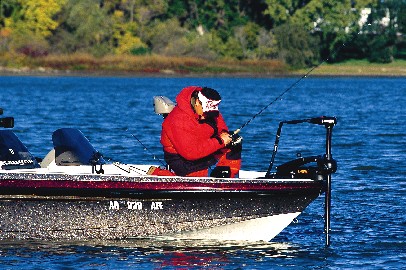Electronic ’eyes

Sure, you’ve got your eyes on the prize when you’re trolling, spying electronics for the presence of baitfish and predators. An important tactic to pinpoint the twin pillars of open-water walleye angling, well beyond the parameters of typical trolling speeds of 2.4 mph and under, is to search at high speeds, a technique now possible with high-powered liquid-crystal units, particularly those with color readouts.
“More than ever, I’m using my electronics while on plane to look for baitfish and fish,” said Walleye Tour pro John Campbell.
The way he does it is by making sure his transducer is rigged properly to produce the crispest signal with minimal interference. Then he cruises between 28 mph and 30 mph, looking for fish. Any slower and they scatter from the cone angle before the boat reaches them. During practice, Campbell said, he often heads 10 or 15 miles in one direction, “on a boat ride for an hour or two.”
A caveat for open-water searching at slower cruising and trolling speeds is that walleyes often spook from the boat before you mark them. Sometimes it seems as if you’re fishing the Dead Sea. The reason is that Great Lakes waters, since the invasion of zebra mussels, are clearer than ever. Correspondingly, the walleyes are spookier than ever. “Now the whole theory of being able to see fish before you fish them has almost gone down the drain,” Todd Frank said. “You almost can’t eliminate water at moderate speeds anymore with your electronics.”
Which is to say, now is the time to do what Campbell, Frank and Emeril do – kick it up a notch.